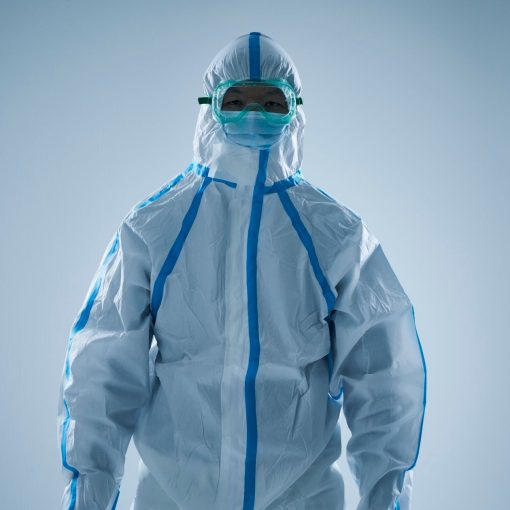When it comes to safety at work, nothing is more important than proper protection. One of the most essential items in any safety gear list is the Protective Suit. Whether you are in construction, healthcare, cleaning, or handling chemicals, a body protection suit covers your body entirely and reduces the risk of exposure to harmful substances. But with so many options in the market, how do you know which one is right for you?
The truth is, not all protective clothing is the same. Some are designed for light tasks like dust protection, while others are made to withstand hazardous chemicals, liquids, or outdoor weather.
That’s why choosing the right suit depends on your work environment, the type of risks you face, and the comfort you need for long hours of use. In this blog, we’ll guide you through the most important factors to consider before buying a protective suit.

1. Understand Your Work Environment:
The first step in protecting the suit is identifying where it will be used. Each workplace has its own challenges:
- On a construction site, dust and dirt are common hazards.
- Liquid and germ exposure are of primary concern in the healthcare site.
- Chemical handling requires protection from splashes or spills.
- A waterproof rating may be required for outdoor work.
If you are clear on the hazards, the protective clothing can be chosen accordingly to meet the safety requirements. A protector suit meant for cleaning will not go well in a chemical lab, and a disposable suit may not be enough for industrial-level construction.
2. Select the Proper Material:
Suit materials constitute one of the major factors in its performance. Some of the commonly used materials are:
- Polypropylene suit: light in weight and breathable, good protection against dust or more or less dirt.
- Polyethene-coated Suit: Added protection from splashes and light liquids, ideal for healthcare or laboratories.
- PVC or polyurethane suit: The best constant in strength, waterproof and outdoor work or heavy industrial use.
Always match the material with the risks of your job. A breathable material works well in hot environments, while a waterproof fabric is better for rain or wet conditions. The right choice ensures your body protective suit protects you without sacrificing comfort.
3. Focus on Design and Fit
A good protective suit should fully cover your body from head to toe. Look for designs that include:
- A hood to protect your head and neck.
- Elastic cuffs and ankles to seal against dust or liquid.
- Zipper or front closure for quick wear and removal.
The fit is just as important as the design. A loose suit may get caught in machinery, while a tight one can restrict movement. Always pick a size that allows you to move freely but still provides complete coverage.
4. Comfort and Breathability:
Working long hours wearing a protective suit can be uncomfortable if the material holds heat and sweat. Suits that let air circulate make long shifts less fatiguing. If your job requires physical activity or being outdoors, comfort must be a priority. After all, if you’re uncomfortable, your concentration on work and safety may also diminish.
5. Disposable vs. Reusable Suits:
Another crucial factor is choosing between disposable and reusable protective wear. Disposable suits are designed for single-use. They are less costly and lightweight, making them suitable for healthcare, laboratories, or cleaning, where cleanliness is critical. Reusable suits are stronger and more durable.
They are more suitable for industries such as construction or chemical handling, where people wear protection equipment every day. Consider how frequently you will use the suit, and how it will be used. If using daily for heavy-duty work, then investment in durable protective suits may be most economically viable for you.
6. Safety Standards and Certification:
Every suit is not available with the same amount of attention. It is important to always check that the protective suit is certified to local or international standards. Certification means that the suits pass resistance tests for dust, liquid, or chemicals, and you can be assured they will perform as intended.
7. Extra Features to Consider
Apart from the basics, some suits come with additional features like:
- Flame resistance for welding or electrical tasks.
- High-visibility colours for outdoor or roadside work.
- Reinforced stitching for extra durability.
These small details can make a big difference depending on your job. Choosing a suit with the right extras adds an extra layer of safety.
Conclusion:
Selecting the proper personal protective clothing is more than compliance with rules; it is about your health and avoiding injury on the job every day. You can buy a good personal protective clothing choice by evaluating the work environment, work material, and fit, comfort, and safety standards established for the clothing.
If you’re looking for a good protective clothing supplier, consider Livingstone International, which offers quality protective suiting and coveralls made from reliable health and safety standards. Explore our products!




